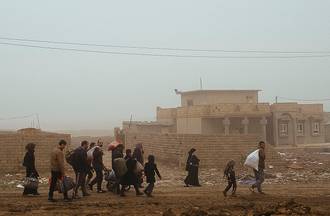Combining the Arms of the Future
The project maps the interactions between emerging and legacy technologies, and seeks to identify how tactical manoeuvre elements will organise and fight over the coming decades.
For almost 100 years, armies have applied combat power through a consistent formula: armour, artillery, infantry, engineers and signals, all manoeuvring aggressively for advantage. Improvements in vehicle design have increased the tempo at which combined arms formations operate, and expanded their lethality. Still, the ingredients have remained the same.
This formula is increasingly being called into question. The density of sensors on the modern battlefield is rendering the element of surprise hard to secure. Long range precision fires are punishing concentration. The electromagnetic spectrum is becoming crowded, frustrating communications. Lower force densities are causing forces to mutually penetrate, threatening the large logistical effort required to support mechanised formations. Collectively, these developments threaten core tenets of mechanised warfare.
Much of the discussion on the future of war has focused on individual technologies: ‘drones’, artificial intelligence, and cyber are some of the most prominent examples. Examining these in isolation, however, tends to obscure the supporting systems needed to make them practical tools of war. What is missing is an appreciation of how new technologies interact, and how they interface with legacy systems.
Combining the Arms of the Future is a project that will explore combinations of capability, how they complement or conflict with each other, and what is required to field them in a sufficient volume to deliver effects on the battlefield. Based on extensive observation and experimentation, the project will seek to identify the principles for designing the competitive combined arms formation of the future.
Aims and objectives
The project will lead to a book, to be published in 2023. As the project gathers pace, however, a range of shorter publications and seminars will be organised to develop the topic. As the research develops, it will be critical to gain input from military professionals from across the globe. If you have ideas you would like to contribute to the project, do contact the project team.
Project sponsor
Smith Richardson Foundation
The mission of the Smith Richardson Foundation is to contribute to important public debates and to address serious public policy challenges facing the United States. The Foundation seeks to help ensure the vitality of our social, economic, and governmental institutions. It also seeks to assist with the development of effective policies to compete internationally and to advance U.S. interests and values abroad.
Find out more







